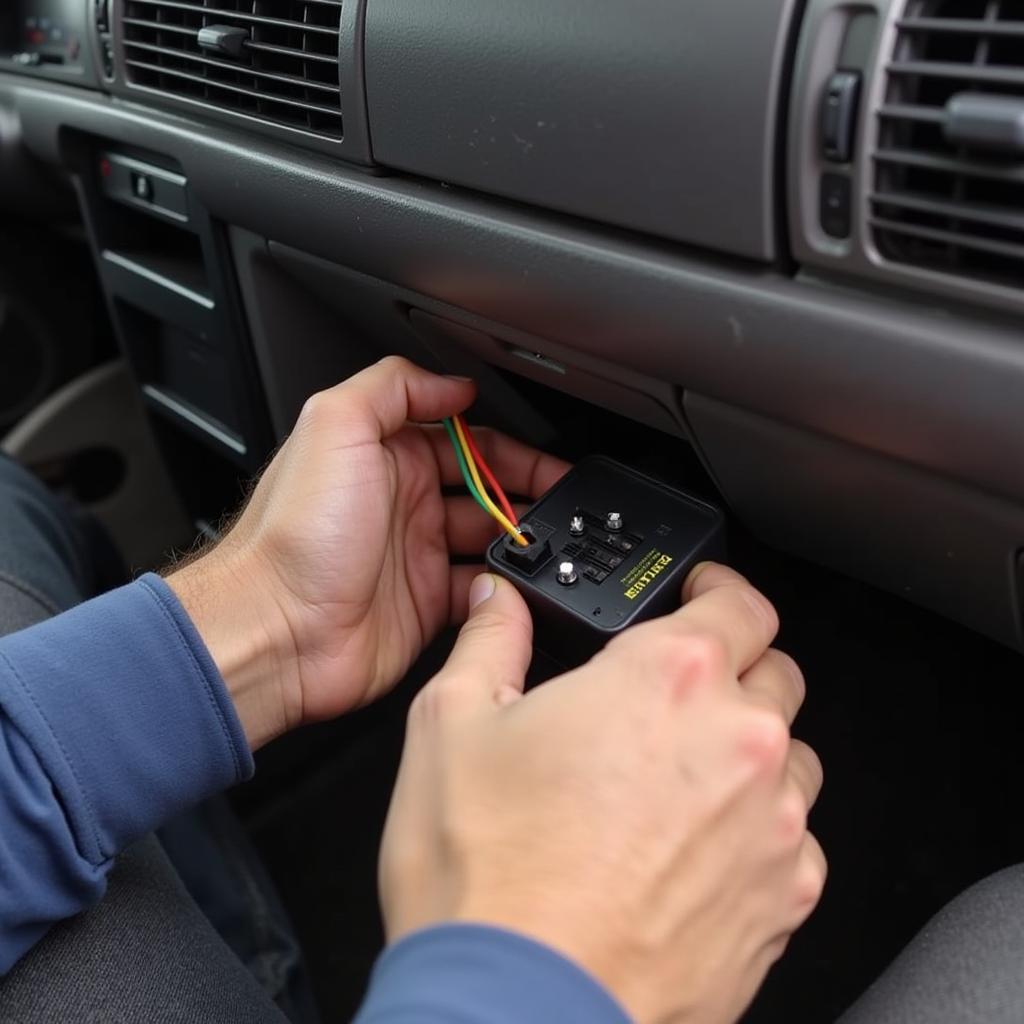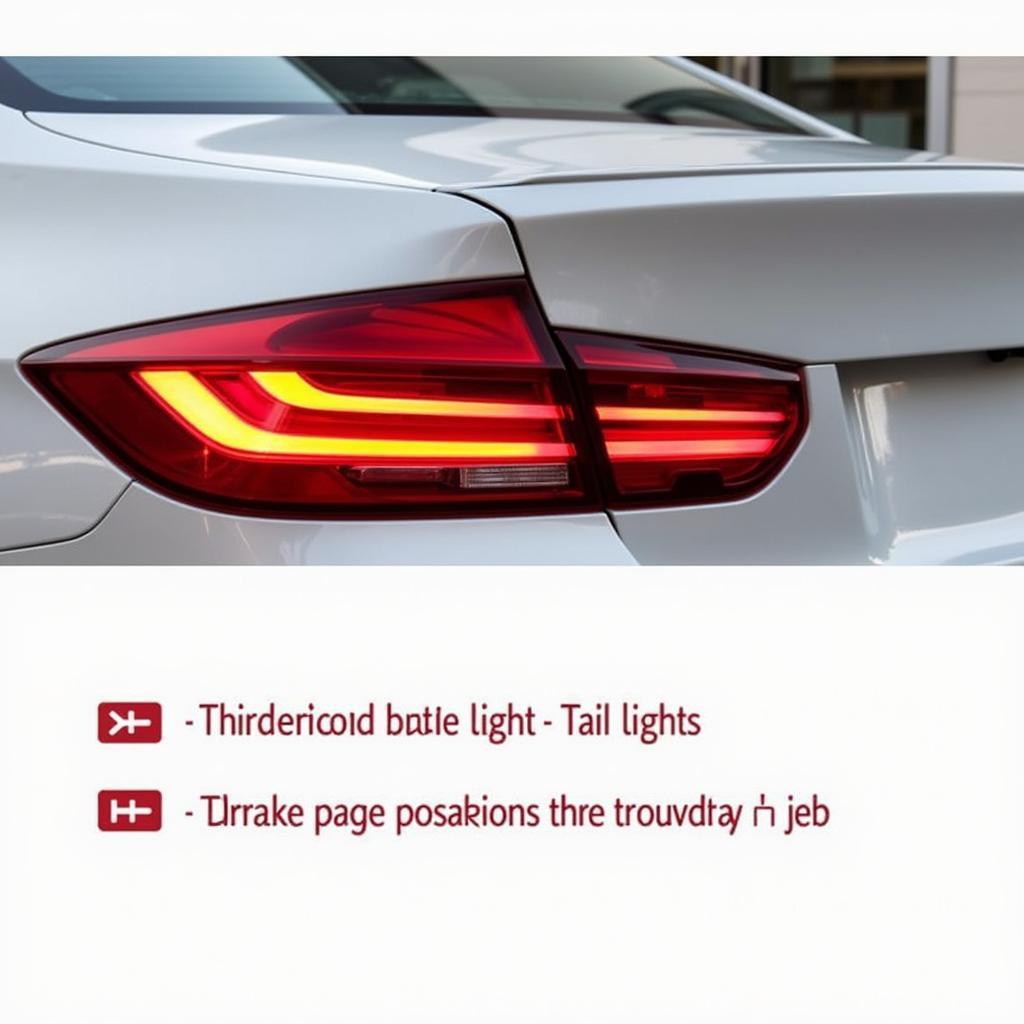If you own a 2000 Ford F53 motorhome, you might encounter an issue with the parking brake warning light switch. This article serves as a comprehensive guide to help you understand, diagnose, and potentially resolve this problem. We’ll delve into the common causes, symptoms, and solutions related to the 2000 Ford F53 parking brake warning light switch.
Many RVers have reported issues with their parking brake warning light staying on even when the parking brake is fully disengaged. This can be a frustrating and potentially concerning issue, especially if you’re unsure of the cause.
This guide will equip you with the knowledge to identify the problem and take the appropriate steps to fix it.
Understanding the Parking Brake Warning Light Switch
The parking brake warning light switch plays a crucial role in your Ford F53’s safety system. Its primary function is to alert you if the parking brake is not fully released. When you engage the parking brake, the switch closes, completing a circuit that illuminates the warning light on your dashboard. Releasing the parking brake should open the switch, breaking the circuit, and turning off the light.
Common Causes of Parking Brake Warning Light Switch Issues
Several factors can lead to problems with your parking brake warning light switch. Here are some common culprits:
-
Faulty Switch: Over time, the parking brake warning light switch itself can wear out, malfunction, or become damaged. This is often the most common cause of the warning light staying on.
-
Worn-out Brake Shoes/Pads: As your brake shoes or pads wear down, the parking brake mechanism may require further adjustment to hold the vehicle securely. This can put stress on the switch and cause it to malfunction.
-
Misaligned Switch: If the switch is not correctly aligned, it may not disengage properly when you release the parking brake, causing the light to stay illuminated.
-
Damaged Wiring: The wiring harness connecting the switch to the dashboard could be damaged or corroded, leading to a faulty connection and a false positive warning light.
-
Low Brake Fluid: While less common, low brake fluid can sometimes trigger the parking brake warning light. It’s crucial to check your brake fluid level if you experience this issue.
Diagnosing the Problem
Identifying the root cause of your parking brake warning light issue is key to implementing the correct solution. Here’s a step-by-step approach to diagnose the problem:
-
Visual Inspection: Start by visually inspecting the parking brake mechanism, including the switch itself. Look for any visible signs of damage, wear, or misalignment.
-
Check Brake Fluid: Ensure the brake fluid reservoir is filled to the appropriate level. If it’s low, top it up and see if the warning light turns off.
-
Test the Switch: Locate the parking brake warning light switch, usually mounted near the parking brake pedal assembly. With the parking brake released, disconnect the electrical connector from the switch. If the warning light turns off, the switch is likely faulty and needs replacement.
 Testing the Parking Brake Warning Light Switch
Testing the Parking Brake Warning Light Switch
-
Inspect Wiring: Examine the wiring harness leading to the switch for any signs of damage, fraying, or corrosion. Repair or replace any damaged wiring.
-
Consult a Mechanic: If you cannot pinpoint the issue after these steps, it’s advisable to consult with a qualified mechanic experienced with Ford F53 motorhomes. They can utilize specialized diagnostic tools to pinpoint the problem accurately.
Solutions and Repairs
The solution to your parking brake warning light issue will depend on the root cause identified during the diagnosis. Here are some potential solutions:
-
Replace the Parking Brake Warning Light Switch: If you determine that the switch is faulty, replacing it is a relatively straightforward process. You can purchase a new switch from an auto parts store and install it yourself or have it replaced by a mechanic.
-
Adjust Parking Brake: If worn brake shoes or pads are causing the issue, you’ll need to adjust the parking brake. Refer to your owner’s manual for instructions on how to adjust the parking brake on your specific Ford F53 model.
-
Repair or Replace Wiring: Any damaged or corroded wiring in the system should be repaired or replaced to ensure a proper connection.
-
Address Low Brake Fluid: If low brake fluid is the culprit, refill the reservoir to the appropriate level. However, if the fluid level is consistently low, it indicates a potential leak that requires immediate attention from a qualified mechanic.
Conclusion
Dealing with a persistent parking brake warning light can be an annoying and potentially unsafe issue. By understanding the function of the parking brake warning light switch and following the steps outlined in this guide, you can diagnose the problem and determine the most appropriate course of action. Remember, always prioritize safety when working on your vehicle, and don’t hesitate to seek professional assistance from a qualified mechanic when needed.

